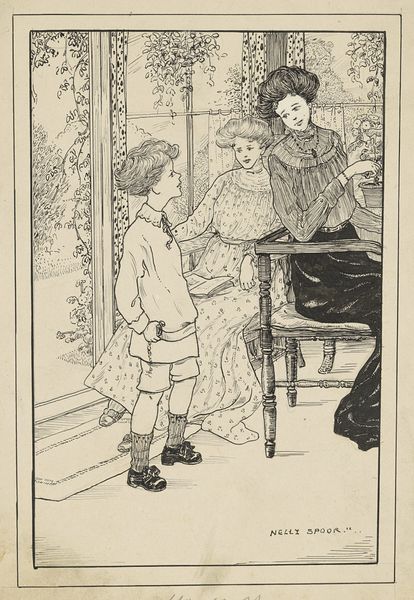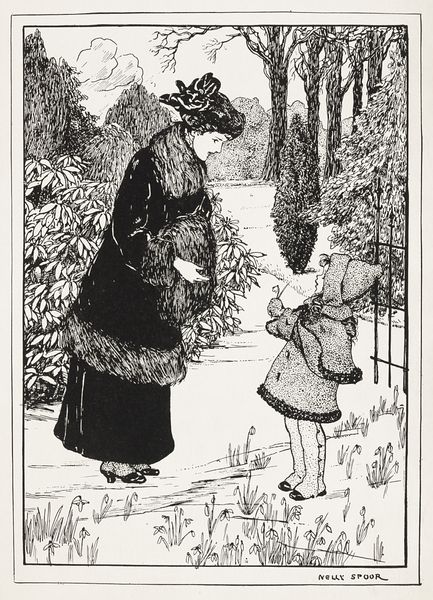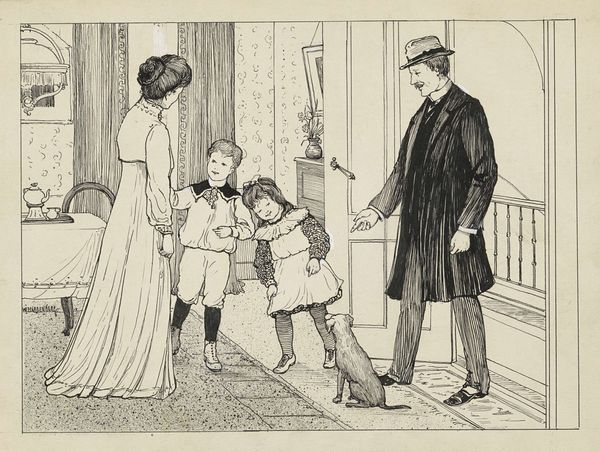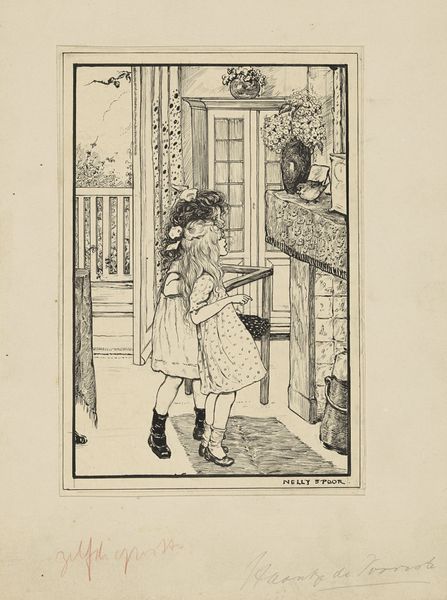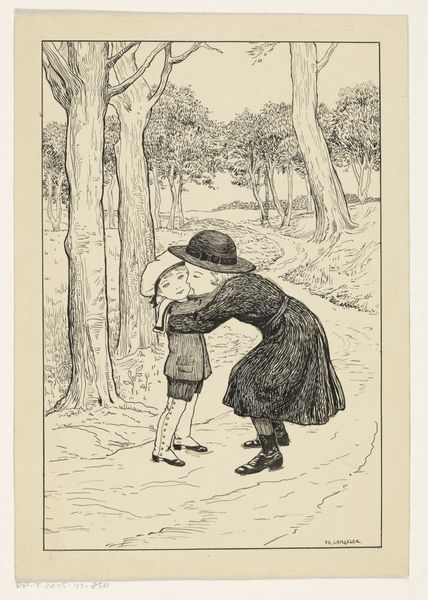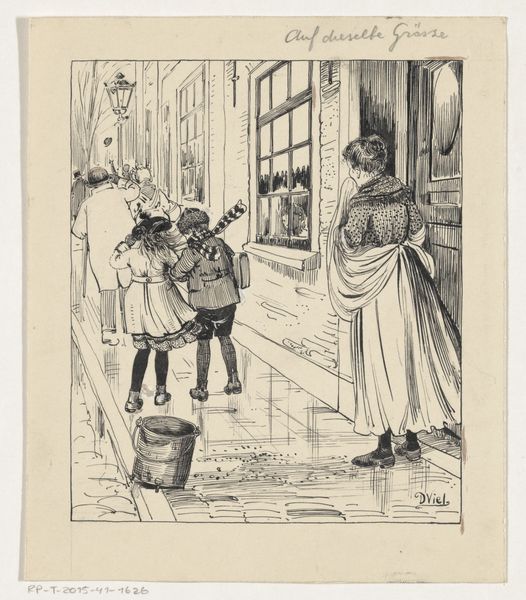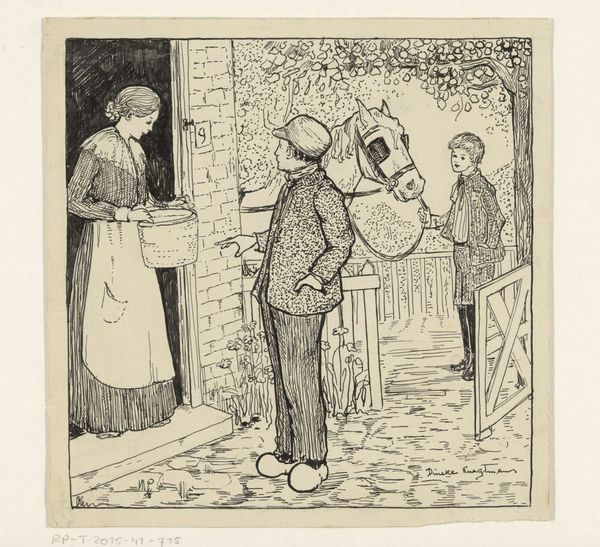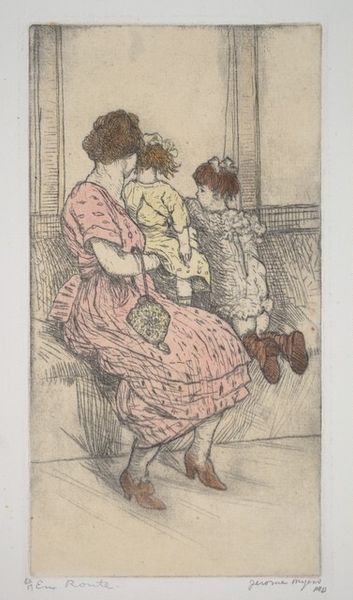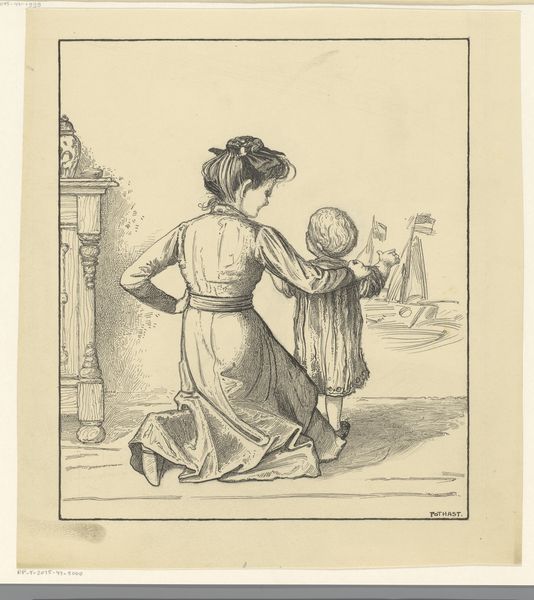
drawing, paper, pen
#
portrait
#
drawing
#
pen illustration
#
paper
#
intimism
#
pen
#
genre-painting
Dimensions: height 133 mm, width 109 mm
Copyright: Rijks Museum: Open Domain
Curator: Looking at Dineke Knegtmans’ pen drawing "Vrouw buigt zich naar een huilende jongen" ("Woman bends down to a crying boy") created sometime between 1919 and 1930. The composition feels quite stark, almost unsettling in its simplicity. Editor: There’s a tender quality to this piece, despite the stark lines. I'm curious about Knegtmans' process here. What pen and paper were used and could their ready availability signal its existence outside of the standard fine art institutions of her time? This almost feels like an intimate moment plucked from everyday life. Curator: It could be argued that way; this is intimism in practice, that very private encounter made public. But consider the societal constraints and the changing role of women as artists. Is this rendering intended for public consumption, to be framed on walls, or something much more quotidian? The historical context dictates so much about how and why it would have been shown. Editor: That's interesting to consider the consumption and circulation here. Did she envision mass production through lithography? Were printed illustrations her primary means of support, versus relying on patronage for larger-scale paintings? Curator: Exactly, and the institutional framework absolutely informs how we categorize this. It depicts an interesting tableau of grief. The woman’s fashionable, somewhat embellished clothing provides a stark contrast to the boy. We have class commentary here as well. Editor: Agreed, the textures achieved through cross-hatching provide depth and interest. We must think about the skill needed to manage and manipulate the pen to convey light and form on common paper. How was the workshopping process of these sketches influenced by other popular visual material from newspapers and books of the period? Curator: Those publications played a key role in circulating certain imagery of everyday life as a commentary on class and circumstance, and I'd imagine Knegtmans work appeared there. The image would have found a wide public role through its potential accessibility and familiarity for many at that time. Editor: That makes me appreciate even more Knegtmans ability to use a very simple pen and what must have been, from the look of it, just standard paper. The contrast of her approach makes me want to look at her full body of work to gauge her relationship to that kind of labor and its inherent value in visual communication of that period. Curator: Examining these kinds of genre works also expands our notions of fine art traditions as so entrenched in traditional modes and practices when women often engaged with these subjects in their everyday.
Comments
No comments
Be the first to comment and join the conversation on the ultimate creative platform.
